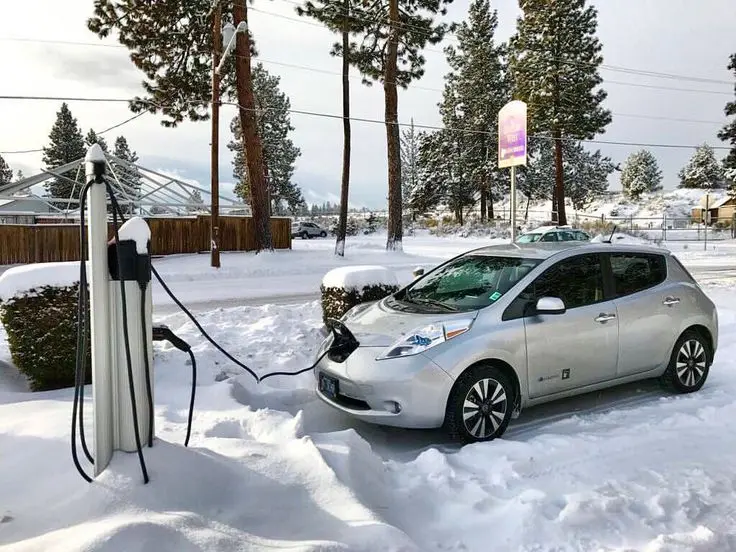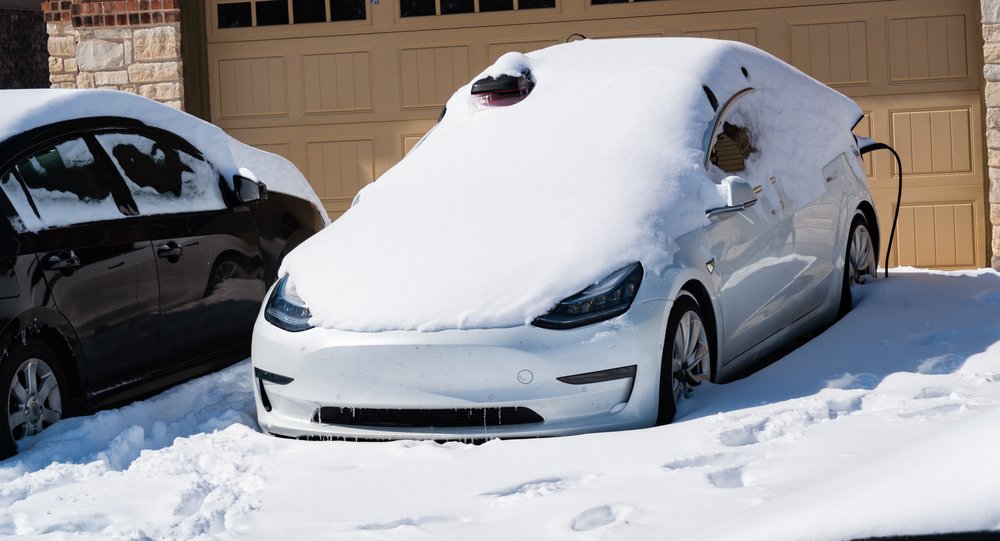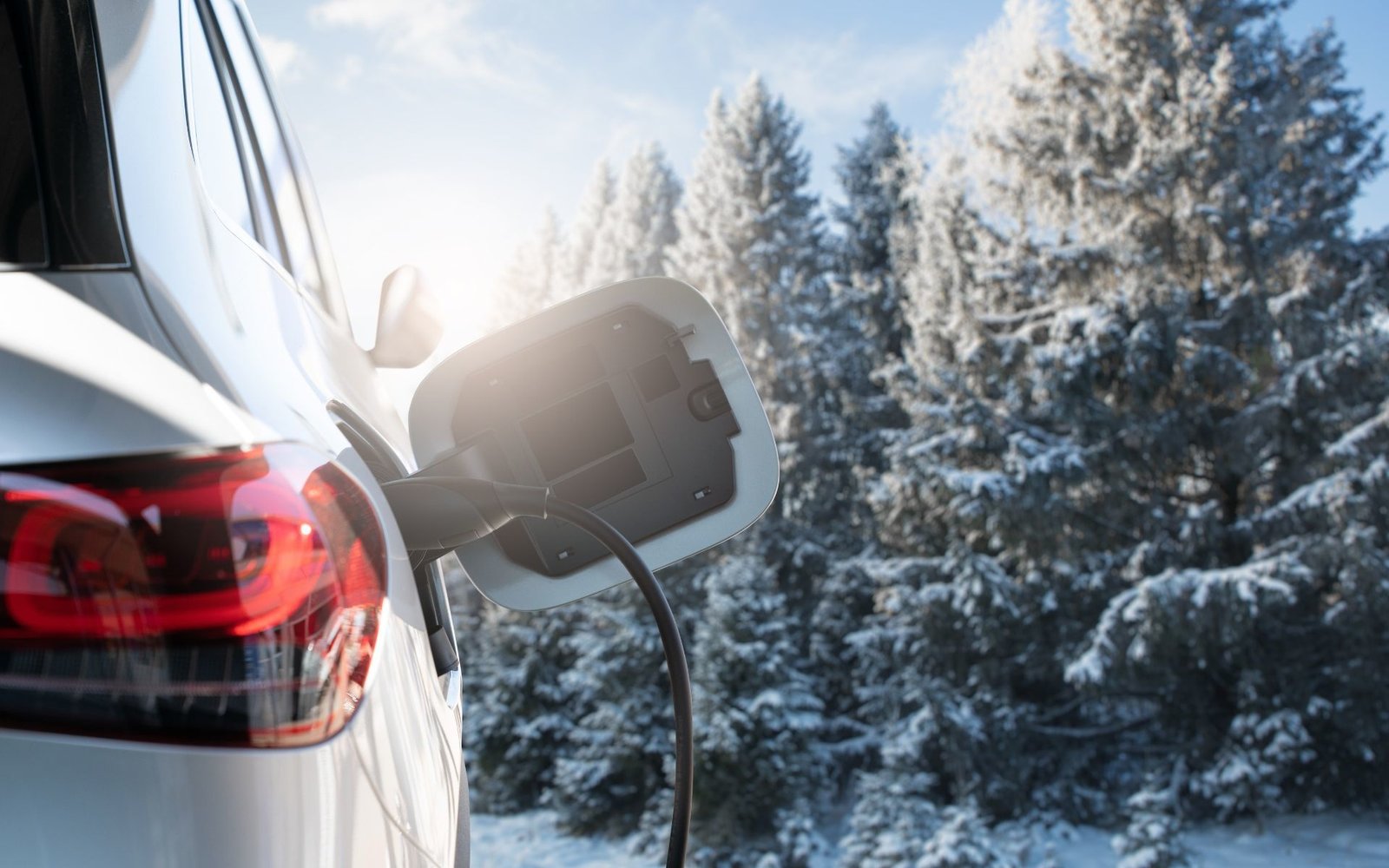Can EVs handle -30°C temperatures? Will your battery die halfway to work? We tested electric cars in Canada’s worst winters to find out.
The Cold Truth About EV Range Loss
There’s no sugarcoating it: electric vehicles lose significant range in frigid Canadian winters. According to a comprehensive study by Natural Resources Canada, most EVs experience a 30-50% range reduction when temperatures plummet to -20°C or below. Do Electric Cars Work in Canadian Winters?

For example, a Tesla Model 3 Long Range that delivers an impressive 491 km in summer conditions might only manage around 290 km in the depths of winter. This isn’t a manufacturing defect—it’s simply the reality of lithium-ion battery chemistry, which becomes less efficient in cold temperatures.
Two main factors contribute to this winter range loss:
- Battery chemistry slows down – Chemical reactions within lithium-ion batteries naturally slow in cold temperatures, reducing the battery’s ability to deliver power efficiently.
- Cabin heating demands significant energy – Unlike gas vehicles that use “waste heat” from the engine to warm the cabin, EVs must draw power directly from the battery to keep you comfortable.
How EVs Are Engineered for Winter
Automakers understand Canada’s climate challenges and have developed sophisticated technologies to address winter performance:
Heat Pumps vs. Resistive Heaters
Early EVs relied on resistive heating (essentially electric space heaters) to warm the cabin—an incredibly inefficient approach. Modern EVs increasingly feature heat pump systems that work like reverse air conditioners, moving heat rather than generating it.
Tesla’s advanced heat pump system, introduced in newer Model Y and Model 3 vehicles, reduces heating-related energy consumption by up to 30% compared to resistive heating. This translates directly to better winter range.
Battery Preconditioning
One of the smartest winter EV features is battery preconditioning. By warming the battery pack to its optimal operating temperature while still connected to a charger, you can minimize range loss and improve performance.

Most EVs now offer scheduled departure features through their companion apps, allowing you to set departure times so the vehicle automatically begins warming the battery and cabin while still drawing power from the grid rather than the battery.
Thermal Management Systems
Not all battery thermal management systems are created equal. Hyundai and Kia’s E-GMP platform (Ioniq 5, EV6) features an ultra-fast battery warming system that can quickly bring cells to optimal temperature, particularly useful before DC fast charging in winter conditions.
Ford’s F-150 Lightning uses a liquid-cooling system that can also be reversed to warm the battery in cold weather, preserving range and improving performance.
Top 5 Winter-Ready EVs in Canada
1. Tesla Model Y
Winter strengths: Most efficient heat pump system on the market, extensive Supercharger network across Canada, regular OTA updates specific to cold weather performance
The Model Y has proven itself in Canadian winters with its sophisticated heat pump that recaptures waste heat from the drive units and battery. Tesla’s vertical integration allows them to optimize the entire system for cold weather, and regular software updates continue to improve winter efficiency.
2. Ford F-150 Lightning
Winter strengths: Extended range battery option (131 kWh), excellent ground clearance for snow, powerful 4WD system, can serve as emergency home power
The F-150 Lightning combines traditional truck winter capabilities with EV advantages. Its massive battery capacity means that even with winter range loss, it can handle typical Canadian driving needs. The available Pro Power Onboard system can even power your home during winter power outages.
3. Hyundai Ioniq 5
Winter strengths: Ultra-fast battery warming system, heat pump standard on most trims, 800V architecture for quicker winter charging
The Ioniq 5’s sophisticated battery thermal management system can rapidly bring the battery to optimal temperature, critical for both driving range and fast charging in cold weather. Its spacious interior also means plenty of room for winter gear and equipment.
4. Volvo XC40 Recharge
Winter strengths: Swedish winter engineering heritage, standard heat pump, excellent cold-weather safety features
Coming from a company with decades of Swedish winter testing, the XC40 Recharge brings Volvo’s winter expertise to the EV market. Its one-pedal driving system is calibrated for snow conditions, and the climate control system prioritizes efficiency without sacrificing comfort.
5. Chevy Bolt EV/EUV
Winter strengths: Affordable entry point, improved thermal management in newer models
While the Bolt lacks the heat pump found in pricier competitors (using resistive heating instead), it remains a solid winter performer at a more accessible price point. The 2022+ models feature improved battery thermal management that helps mitigate some cold-weather range loss.
Pro Tips for Winter EV Driving
Park Indoors When Possible
Keeping your EV in a garage, even an unheated one, can significantly reduce battery temperature loss. If indoor parking isn’t available, try to park in sheltered areas out of the wind.
Use Scheduled Departure to Preheat
Most EV apps allow you to set departure times so your vehicle can warm the battery and cabin while still connected to power. This “pre-conditioning” is the single most effective way to improve winter range.
For Tesla owners: Use the “Scheduled Departure” feature rather than just “Preconditioning” to ensure the battery itself is warmed, not just the cabin.
Install Proper Winter Tires
EVs’ instant torque makes proper winter tires even more crucial. EV-specific winter tires like the Michelin X-Ice Snow or Nokian Hakkapeliitta R5 EV are designed to handle the additional weight and torque characteristics of electric vehicles.
Adjust Your Charging Habits
In extreme cold, keep your battery between 20-80% charge when possible. Batteries are most vulnerable when nearly empty or completely full. Many EVs allow you to set charging limits—70-80% is ideal for daily use, saving the full 100% charges for long winter road trips.
Drive Smarter
Use eco modes and one-pedal driving to maximize regenerative braking. Reducing highway speeds from 120 km/h to 100 km/h can improve range by 10-15% in winter conditions.
Use Seat Heaters Instead of Cabin Heat
Heating your body directly through seat and steering wheel heaters uses far less energy than heating the entire cabin. Many EVs allow you to reduce cabin temperature while keeping seat heaters on high.
Conclusion
While EVs do experience significant range loss in Canadian winters, the latest models with heat pumps and intelligent thermal management systems have made electric vehicles entirely viable even in the country’s coldest regions like Winnipeg or Edmonton.
The key is understanding how to operate your EV efficiently in winter and choosing a model with the range and features that match your specific needs. With proper preparation and the right vehicle, electric cars not only work in Canadian winters—they can excel, offering advantages like instant cabin heat, no cold-start issues, and the convenience of home charging on those frigid mornings.
As battery technology continues to evolve and charging infrastructure expands across Canada’s highways, the winter EV experience will only improve from here. The electric winter driving revolution isn’t coming—it’s already here.ith heat pumps and smart thermal management make them viable even in Canada’s coldest cities like Winnipeg or Edmonton.”




